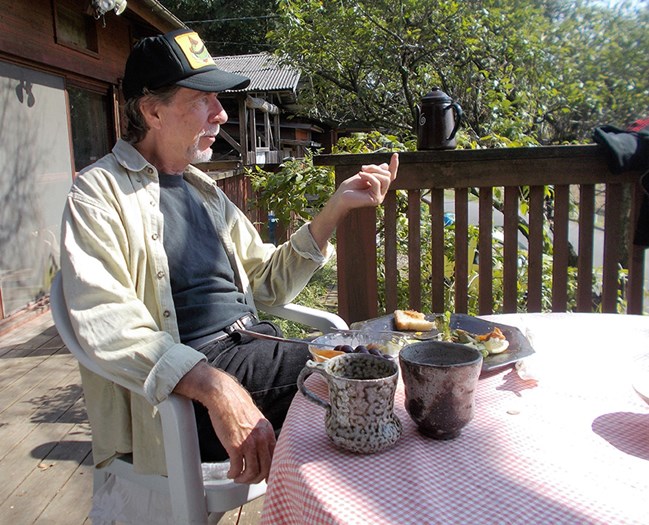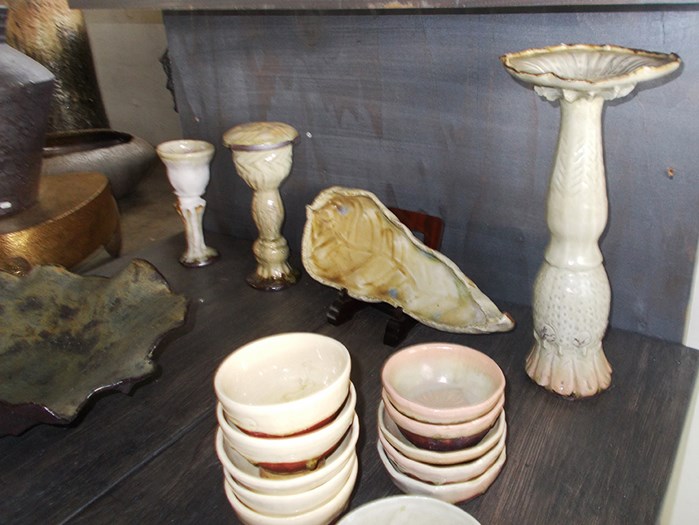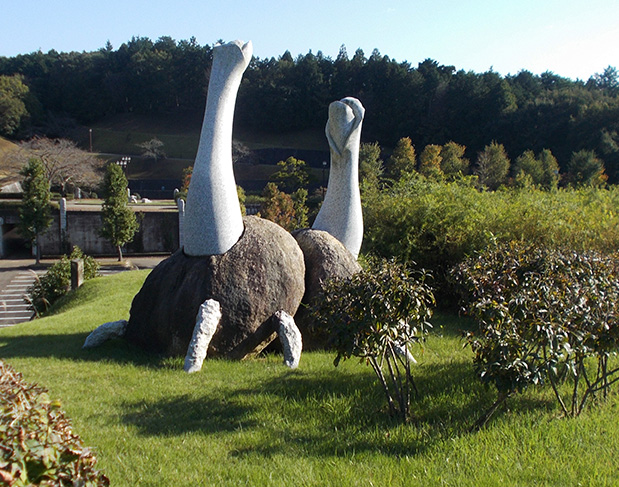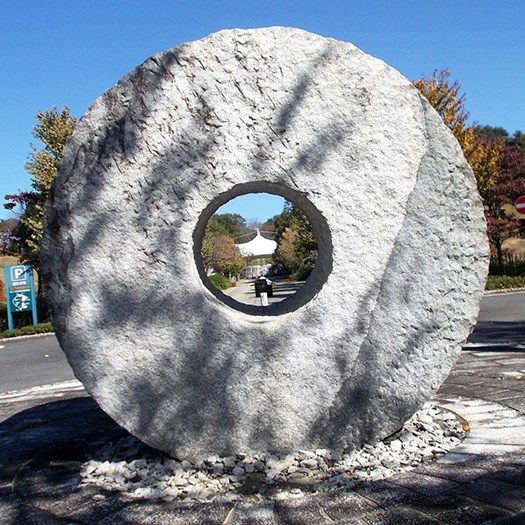KASAMA, JAPAN - Jolted awake in the dead of night, my first thought was that my hotel room in this town in Japan’s Kantō region had been hit by a runaway freight train. Or an 18-wheeler. Or an airplane.
Such an enormous thud. My bed had moved, right? Hell, the entire world had moved, right? I wasn’t dreaming, was I?
Finally, quickly, my spinning mind’s eye focused on the seeming obvious: Earthquake.
Not that there was exactly instant comfort in such a conclusion. But our minds treasure certainty and explanation. If you’re in Japan and something massive goes bump in the night ... makes sense, right?
Like thousands of others that night, I presume, I lay back down and in relatively short order went back to sleep.
The next morning, breakfasting on the front deck of my brother’s house down the road a 20-minute walk from the hotel, it happened again. This time the tremors were more sustained; for several seconds the house and everything else shuddered. Not violently enough to shake the dishes off the table in front of us. But enough that there was a vibration left shimmering in the air, a haunting sort of ch-ch-ch-ch-ch-ch.


Left: Rob Woolsey relaxes at his home in Kazumi. Right: Rob's work is displayed in many Japanese homes.
My younger brother, Rob, also visiting from Canada, and I were appropriately wide-eyed. My older brother, Randy, and his wife, Kazumi, were more bemused by our reactions than alarmed by what, for them, has become a frequent part of life here in the prefecture of Ibaraki, northeast of Tokyo and bordered on the north by the prefecture of Fukujima.
The latter, of course, was site of the deadly 2011 earthquake and subsequent tsunami that devastated the nuclear power station and has left a vast area uninhabitable. The event was anything but routine and everyone lives in fear of a repeat.
Randy and Kazumi, when the Big One hit, fled to the street in front of their house, pottery studios and gallery. Power poles waved back and forth, wires snapped, the earth roared and groaned, and, they say, there was the secondary sound of their livelihood being smashed, reduced to shards.
They are potters in a city of 80,000 built on pottery. Kasama is famed throughout Japan for its production of ceramics of all shapes and sizes and qualities, up to and including museum-worthy work. Indeed, there is a proper museum in town, the Ibaraki Ceramic Art Museum, as there are scores of shops catering to customers who make the less than two-hour drive up from Tokyo, or arrive via regular train and bus service.
The museum is the centrepiece of sprawling, hilly Geijutsu-no-mori Park, known in English as Craft Hills. It has an outdoor amphitheater for musical performance, all sorts of sculptures set upon its massive lawns and along paths winding through treed ravines and a large children’s play area that features a unique roller coaster that winds down a hillside, riders gliding on mats over a bed of little spinning wheels.


Above: Geijutsu-no-mori Park, known in English as Craft Hills, is strewn with many odd-shaped creations.
Each spring, during Golden Week in early May, the park is taken over by an event called Himatsuri in which more than 200 local potters sell their wares, as well as food and drink, from booths arranged in the heart of the bucolic space.
My brother has been there more or less from the beginning of the festival in 1982. How did he wind up here?
Randy was featured in a 2001 article in The Telegraph, the British newspaper.
“I was the first Westerner to live in this town,” he told The Telegraph. “I felt like an elephant in a zoo. If I went into a shop everyone came to look at me. Now there are nearly a dozen foreign potters working here and many more in (nearby) Mashiko. I built the sixth or seventh wood kiln in Kasama. Now there are more than 200.
“People come to Japan to study because the traditions are so rich and so old and it’s a unique place in the history of world pottery. There are about 60,000 potters in the country producing a wide variety of pottery, much of it of a very high standard. They use ancient techniques, mostly absorbed and refined from China and Korea, which until 10 or 20 years ago were unknown in the west. Gaijin (foreigners) used to learn pottery from scratch here - like me - but now that there are so many ceramics departments in the colleges in the West they come here as a sort of finishing school, after they have learned the basics.”
He’s told me the same thing in various forms over the years. Only the exact numbers have changed, although the lengthy slump in the Japanese economy has adversely affected sales of ceramics, especially at the high end.
Now 72, he first arrived in Japan as a young man, having lived and worked in Australia, then travelled up through South-East Asia and the tumult of the Vietnam War era. He taught English for a while in Tokyo but gradually felt the lure of the clay and the potter’s wheel.
Last October we retraced the route he took from the train station in the aforementioned town of Mashiko to the large pottery complex where he worked for pocket money and room and board, with only two days off per month. He provided grunt labour in return for learning the basics of the creation of ceramics. Once he’d accomplished that he moved over a small mountain range to Kasama, where he refined his skills with the special attention of a master potter with whom he formed an especially tight bond.
Randy moved back to Canada for a few years with his first Japanese wife and their young son. He lived for awhile in our hometown of Cupar, Sask., and eventually set up a pottery next to the Yellowhead Highway in the village of Ruddell, northwest of Saskatoon. Long story short, time marched on, the lure of Japan was overpowering and he wound up back there again, where he has now spent most of his life. His second wife, Matsuda Kazami, is an accomplished potter in her own right.
When I visit Japan, I have the great advantage of my brother’s facility with the language and his understanding of the culture. But anyone can enjoy the spirit behind and practice of the arts and crafts and passions that define a people, be it ceramics, the tea ceremony, flower arranging, the martial arts, bonsai, Zen, wood block printing, haiku, paper making, drinking sake, eating sushi, sumo wrestling and rooting for your local team in the biggest sporting event of the year, the high school baseball tournament.
Kasama is worth the day-trip out from Tokyo just to see how different a small city in Japan is from all the mega-cities. Once out of the flat Kanto Plain, the terrain becomes more varied, beautiful, lush, treed and mountainous, interrupted by farmland and, often, people toiling on farms and in rice paddies as if nothing has changed in centuries.
Worth a visit, for sure, is the Inari Shrine in central Kasama. Founded in the year 651, it draws more than three million visitors a year, many of them farmers as it is dedicated to the deity of grains and other crops. The shrine is populated with hundreds of statues of foxes, messengers of the deity.
They might tell you the best way to get to Kasama (besides having a brother to drive you) is by train: From Tokyo, take the Joban or Tobu line or the Tsukuba Express; transfer in Oyama or Tomobe to the Mito Line and get off at Kasama Station.
About the Author
Born and raised in small-town Saskatchewan, Garth has been to a Super Bowl in Florida and a World Cup soccer final in California, attended a baseball fantasy camp in the Dominican Republic and a soccer tournament in Honduras, played golf in Thailand, sat freezing through a Grey Cup game at the Big O in Montreal, witnessed first-hand World Series games in San Diego, Detroit, St. Louis, Philadelphia, Kansas City and Toronto, spent much of one long-ago winter in the Canary Islands, helped an old friend rediscover his roots in Croatia and a daughter develop hers at art school in Italy, has another daughter living in Hong Kong and a brother living in Japan. Those travels, and many more, came in part thanks to a long and rewarding career in sports journalism, mainly at Canada's largest newspaper, the Toronto Star.